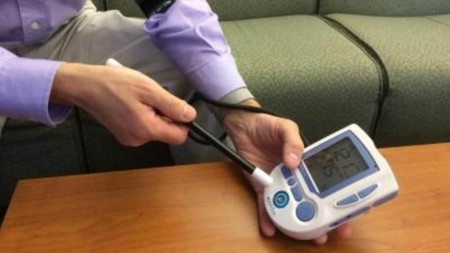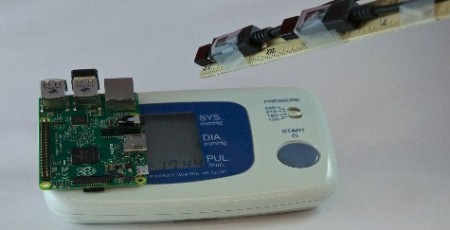February 25, 2016 – I don’t know about you but in our home we have three computers, and two of smart televisions, smartphones and ereaders. All are wireless devices. Setting them up to work with the wireless network requires several steps including finding the network, and then entering the password or WEP key to complete the connection. I’m a master at it but my wife is not and when the WiFi router goes down or needs replacement, getting stuff all reconnected is a colossal pain.
What happens in my house is nothing compared to what others have in the way of devices, and with an increasing number of smart objects being added for both consumer and commercial use, staying connected in the age of the Internet of Things (IoT) could become a headache for some.
Well meet Wanda, the answer to connectivity in the age of WiFi. Developed at Dartmouth College, Wanda is a magic wand that configures a device to join a local wireless network, allows it to partner with other nearby devices to work together, and connects to the cloud.
Wanda looks a lot like a conductor’s baton, or Harry Potter magician’s wand. It has a USB connector. On board are two built-in antennas placed 7 centimeters (approximately 2-3/4 inches) apart. The antennae serve two purposes – to detect nearby wireless devices and to impart information to allow the device secured access to the WiFi network.
In an early Wanda prototype seen in the image below you can see the separation between the antennae being tested (they are taped to the ruler). The device in the test is an A&D Medical blood-pressure monitor.
To get Wanda started a user presses a button on its handle. Wanda then locates the target object by picking up its radio signal transmissions using the wand’s built-in antennae. Wanda compares signal strength between the antennae (see image below) measuring the detectable difference. When Wanda is closer to a target the power reading differential between the antennae is greatest. When far away the difference is minute. The user knows when detect has worked by a visual LED display confirmation.
Once the target device is detected Wanda can now impart information to it using a property of radio wave propagation called reciprocity. Reciprocity is a fundamental property of antennae ensuring that the transmitting and receiving patterns are identical. This reciprocal characteristic makes a handshake between the wand and the target device possible. Within a few seconds all the information required to connect the target object is shared. For users of Wanda it means no more detecting the WiFi network. No more entering WEP key information often on kludgy device interfaces, each with their own software or hardware idiosyncrasies.
Is Wanda hackable? This issue is one that the inventors at Dartmouth College were particularly focused on. They designed Wanda so that all transmitted information would be encoded. And by placing the two antenna in close proximity they made it virtually impossible for remote detection of any information transmitted from and to Wanda by a target device. Because of the antenna positioning the only way a hacker can capture information is to use a directional antenna in very close proximity. Even then the spherical nature of the transmission by both antennae would confuse a directional antenna in its attempt to isolate data bits in transmission. It wouldn’t know which antenna is transmitting or receiving a data bit at any time. That’s what makes the two antennae configuration an ideal solution.
Wanda has proven to be fast and effective in demonstration. It is also demonstrating greater security than any technology or human process to date. Developed as part of a National Science Foundation-funded initiative called Trustworthy Health and Wellness, the technology is seen as an ideal tool for protecting patient privacy in the age of the electronic patient record and digitized healthcare, as well as a solution for self-monitoring by patients at home. For those healthcare workers testing Wanda the common question asked is “when can I take it home to configure all my WiFi-enabled devices?”
How much will Wanda cost? Don’t know. Will it be made available for every day consumer use? Again, don’t know. What we do know is Wanda will be unveiled in April at the upcoming IEEE International Conference on Computer Communications to be held in San Francisco.


















